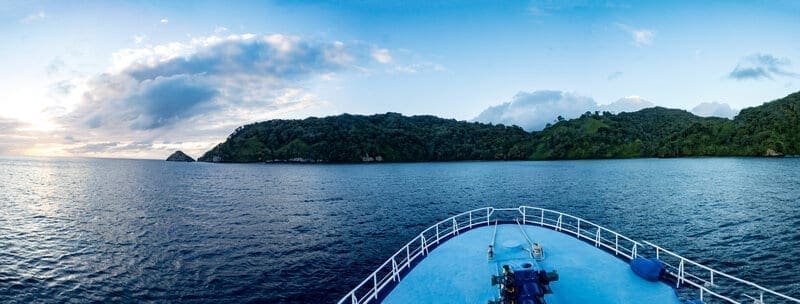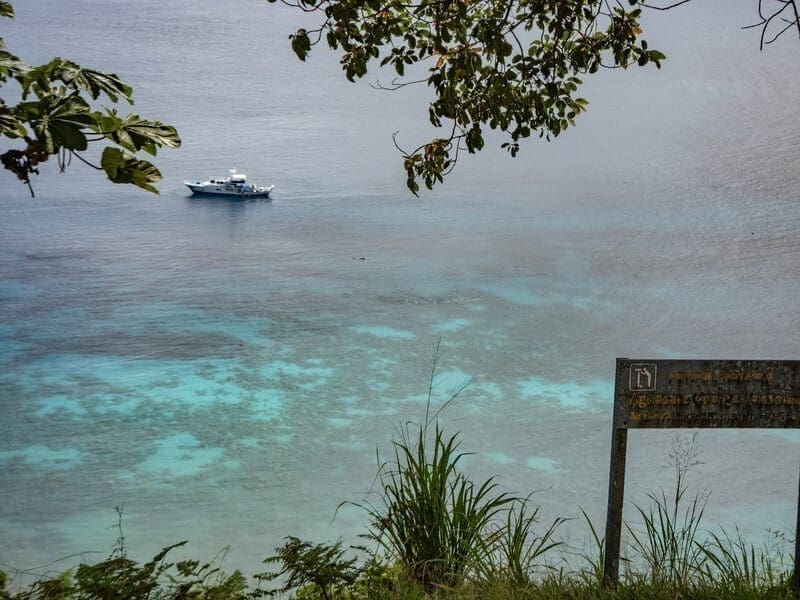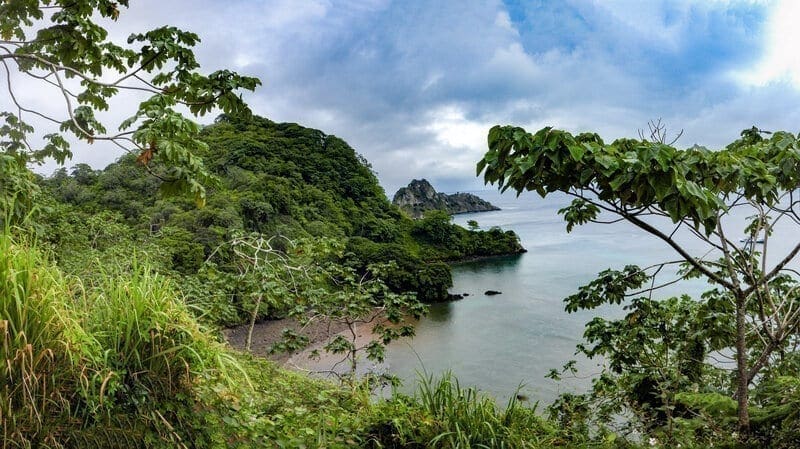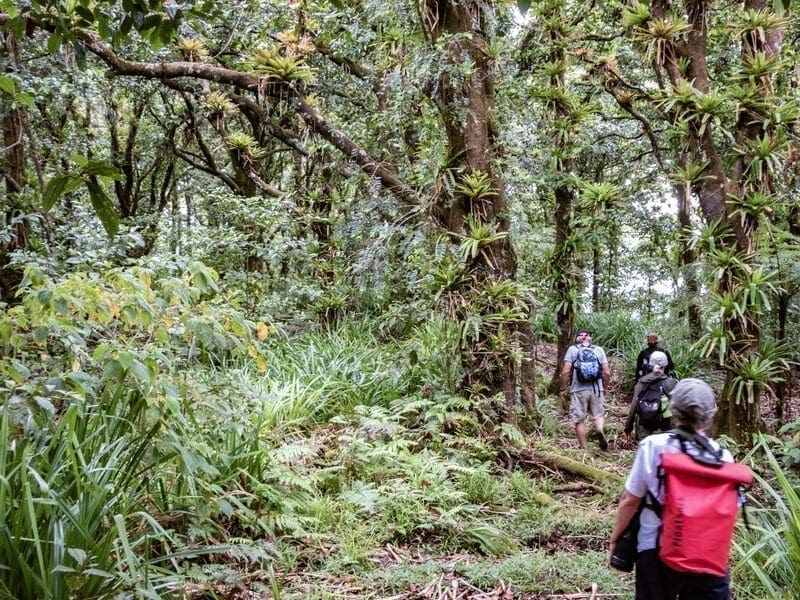Escape to Isla del Coco!
Escape to Isla del Coco!
“We are going to Cocos Island!” drew the usual response when we told our friends: “Looking for sharks?”
“No, no we are not diving,” we replied.
”What?! Why go then?”
Isla del Coco, or Cocos Island, is a tiny island (just nine square miles) 550 kilometers to the southwest of Costa Rica. It became part of Costa Rica in 1821 as the country attained independence, was one of the first named national parks in 1978, and was named a UNESCO World Heritage Site in 1997.
The island’s fame has been driven by historical figures ranging from the pirate Sir Henry Morgan and scientist Charles Darwin, to the authors Robert Louis Stevenson and Michael Crichton, to the famous explorer and environmentalist Jaques Cousteau. Even the U.S. mobster Bugsy Seigel is connected to the story of Cocos Island.
And sharks. It is perhaps the place in the world to see sharks.
Unusual incentive
The global pandemic brought a unique opportunity to sail out to Isla del Coco as part of the first non-diving tour in many years. The 10-day excursion was not for the usual reason of seeing sharks, but for nature, history, pirate and treasure lore, and more importantly — four special birds.
Yes, it was a birdwatching and nature tour, organized by Serge Arias of Costa Rica Birding and operated through the Aggressor Fleet. With Costa Rica’s international borders closed for the most part, the ship could not fill itself with only Tico and resident divers. Therefore, the tour company offered an amazing deal that we could not refuse. All it took was time, money and a negative PCR test for COVID-19.
Initially, seven people signed up for the trip, plus our guide, Serge. Two dropped out and a third tested positive, so five of us headed out with our negative PCR tests in hand to Isla de Coco.
Our ship was the Okeanos Aggressor I, a “liveaboard” dive ship, based out of Puntarenas. It is the only way to visit, since there are no facilities to stay on the island, and overnight stays are prohibited. So home for the next 10 days would be in shared tiny cabins for two. Ours was complete with a porthole that looked like a front loading washing machine since it was underwater when the ship moved.
On departure day, the Aggressor crew notified us that they wanted to leave early to catch the high tide. So we left home early, almost breaking the 5 a.m. rule for vehicle license quarantine restrictions. Since we were not allowed to drive that day, we carried with us an official document in case we were stopped.
We boarded the ship along with passengers who would be diving: a Spanish expat and another from the U.S.; two tourists from the U.S. and Sweden who have been trapped in Costa Rica for five months; a German former divemaster with his Tica wife who has lived in Costa Rica for 20 years; a Polish filmmaker and photographer resident with his Tica friend (and his incredibly expensive Hasselblad cameras): and six other young, well-heeled Ticos.
With so many nationals and long-time residents, it was a lively, funny and all-around great group. And, more importantly, since everyone in the crew and every passenger had tested negative for COVID-19, we went back in space and time once we boarded the ship to a world of no masks or social distancing. It may be worth the trip just for 10 days of remembering and experiencing “The Before Times.”
Off to Isla del Coco
The question at hand: if you are going to Isla del Coco not for the sharks, then what do you actually see and do there?
Let’s start with the beginning. The voyage out to Cocos is long — 36 hours long. The island is actually closer to the Galapagos Islands than it is to Costa Rica. Heading out of port southwest for the 350-mile voyage, everyone was on deck and excited.
Leaving early in the afternoon allowed for great viewing of wildlife in the Gulf of Nicoya: birds, dozens of leaping rays, dolphins, and — since it is whale watching season — amazing views of several, including a breaching humpback whale. We also all enjoyed our first beautiful sunset, with a glass of wine or a cold beer in hand.
Dinner was a surprise for two reasons. As once-avid cruise ship fans, we were amazed at the cruise ship sharpness, friendliness and the amazing quality of the meals offered. Our group members included three with diet restrictions — two vegetarian and one gluten-free — and they were extremely well treated and fed. The second surprise at our dinner table was the bowl of what looked like candy, but was actually seasickness pills.
It was around this time that we left the comfort of the calm seas in the Gulf of Nicoya. At only 110 feet long, the Aggressor is prone to the merciless turbulence of the open Pacific waters. Almost half of the 19 people on board would not be seen again before reaching the island.
For the next day and a half, those of us who were able, basically stood at the ship’s bow birdwatching. We were looking for pelagic birds — those that basically live at sea, coming to land only to breed. The ones we saw sailing by included boobies, storm-petrels, shearwaters, petrels, tropicbirds and frigatebirds. Many were “lifers” for the birders among us who keep count of the birds we have seen on a life list. It was a fun way to spend our day at sea.
At night, while growing closer to the island, we braved the heaving decks to watch and attempt to photograph yet another bird — the ghostly swallow-tail gull — as it followed the ship in the dead of light.



Arrival at Cocos Island and Chatham Bay
Photo link for this section (note: these are uploaded to data dump subfolder):
The seas calmed and the ship slowed very early in the morning, a sign we were arriving at the island. We arrived and anchored at the north side of the island near sunrise. All hands were on deck to witness the first sunrise over Isla del Coco and Chatham Bay. Overhead flew scores of giant frigatebirds, red-footed boobies and the stunningly beautiful white terns, called espíritu santo by Costa Ricans because they look like drawings of the holy spirit dove hovering over things. An unforgettable sunrise!
There are only two small harbors to anchor on the island coast. Chatham is the larger of the two bays, but is unused. It has the former park ranger station, now abandoned, and a small hydroelectric power plant that was built to power the large marine radar tower at the top of the peak 300 meters above. This was once used to monitor illegal fishing activities, as described in past Howler articles, including <insert links>.
Thus began our Cocos Island adventure. Stay with us and read more in this e-magazine’s Travel & Adventure section. < insert page links>




